Building the original mini-ITX PC in November 2020 was one of the best decisions of my life. Here's how the PC looked after a year of heavy-duty service travelling between my home and my parents' place:
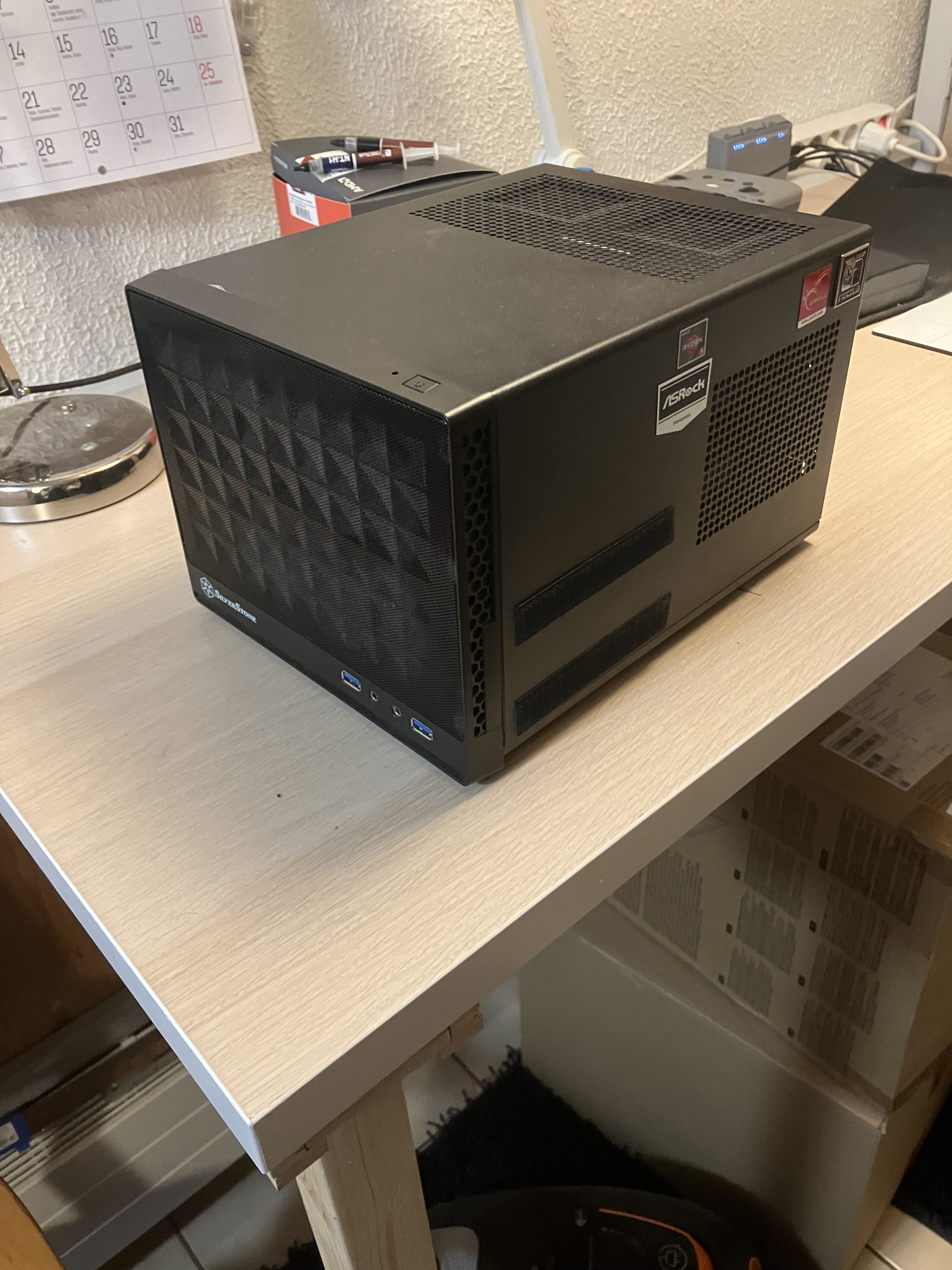
And the insides:
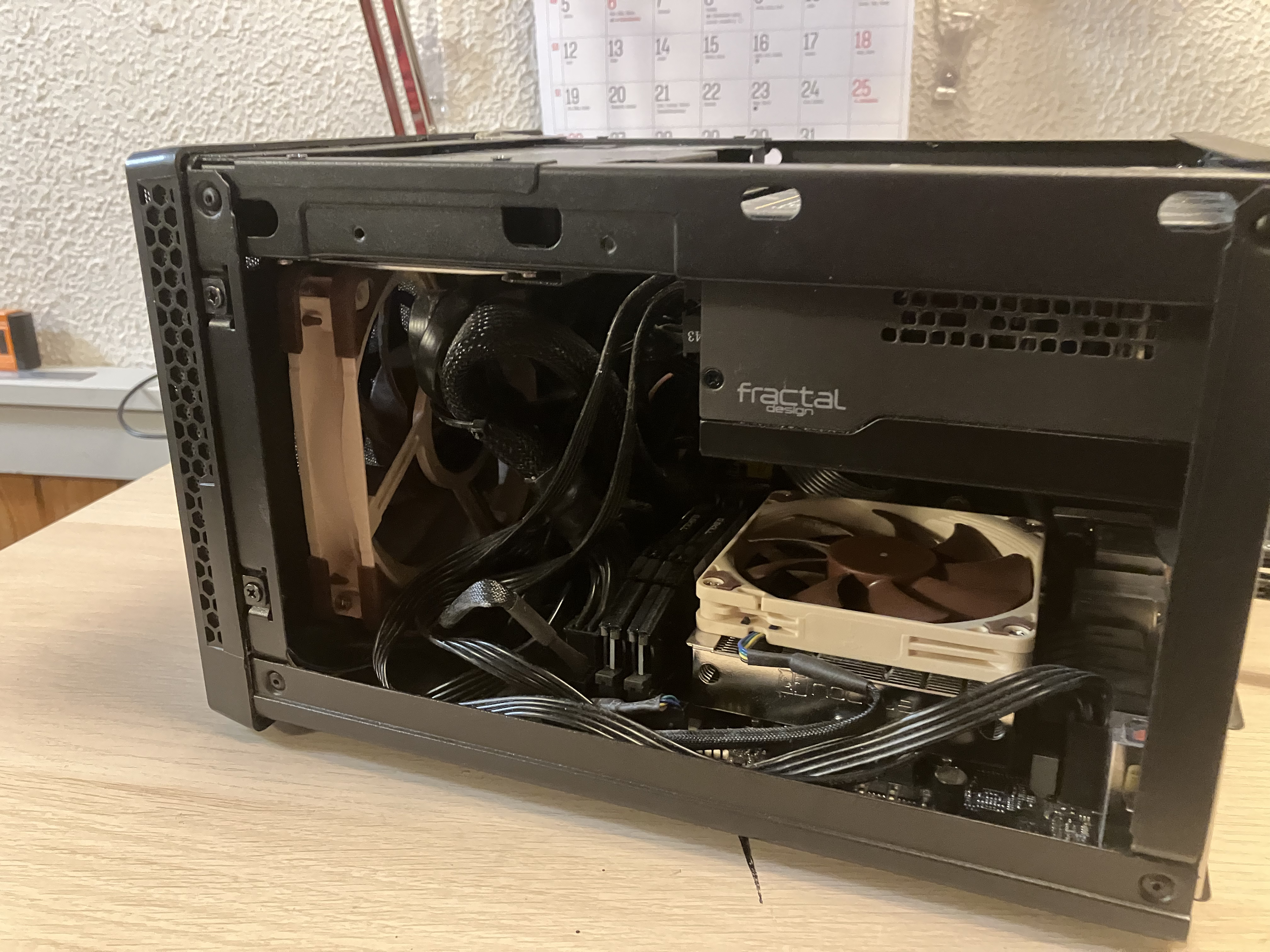
However, when I originally built the thing, I wasn't thinking it'd become my main computer, so the specs were of a lower tier than what I would've picked had I known it was to become my main. That, combined with the fact that the bearings on one of the GTX 1070 Ti fans was starting to give, it was time to build a new mini-ITX, this time to become the main PC from the get go. Seeing how the old GPU took absolutely all the space there was for it in the case, combined with the lack of growing room in the CPU cooling space as well, I knew I needed to swap cases.
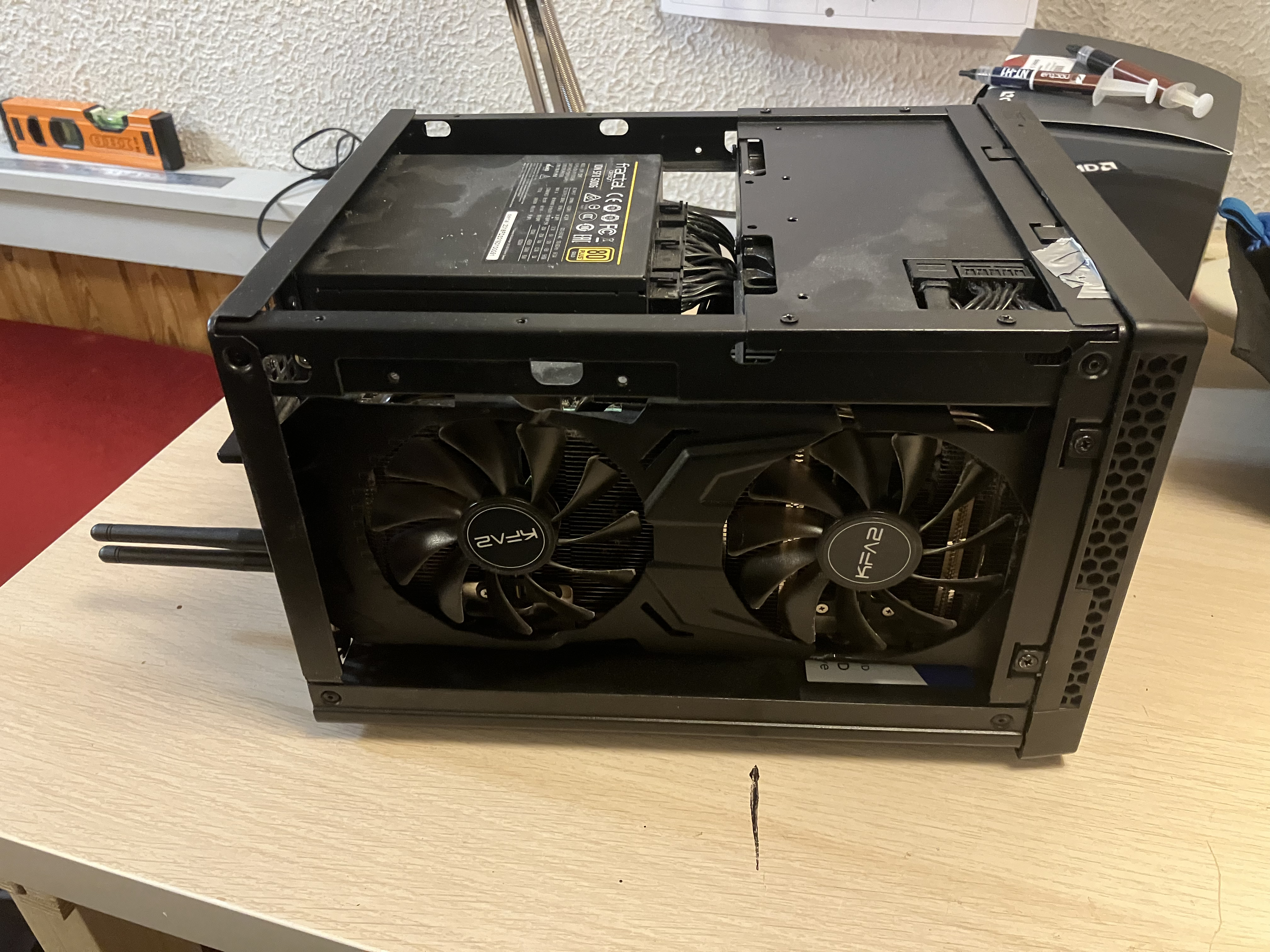
The specs I ended up going with were:
All the new parts cost a total of 1,771.40 € – the supply of GPUs was still poor in Finland (for example, no AMD GPUs were available at all, anywhere).
The first order of business before disassembly was to update the BIOS to add the Zen 3 support. ASRock recommended against doing this on a Zen+ CPU, but I had no choice. However, there were absolutely no issues with this, and the old build kept working fine even after the BIOS update.
Upon disassembling the old build, I encountered an issue. The front panel USB 3 connector WOULD. NOT. LET. GO. In the end, the sleeve of the connector came off with the plug. Luckily, there were no bent pins, so putting the sleeve back on wasn't an issue in the end.
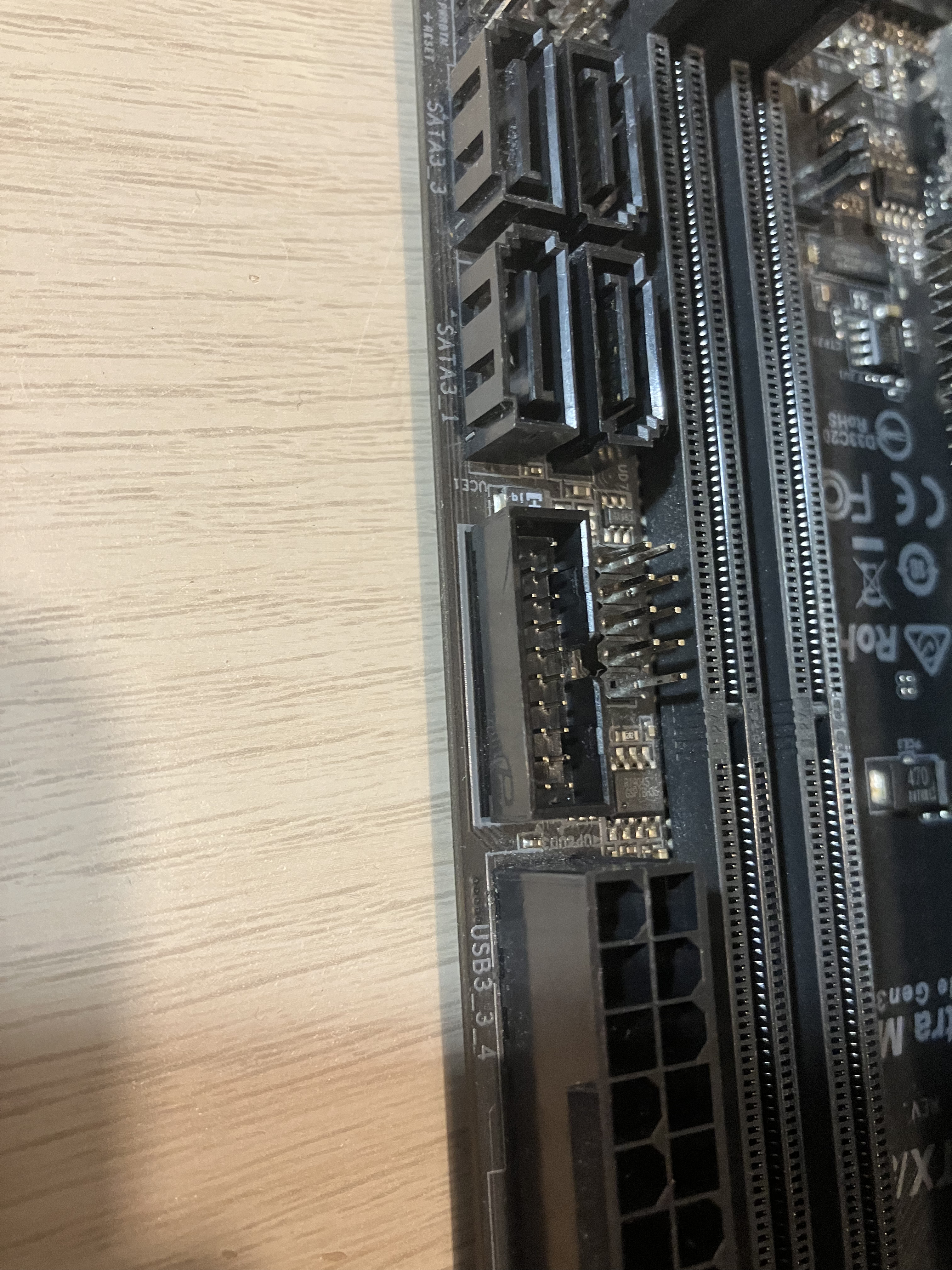
Rebuilding the motherboard with the new CPU and CPU cooler made it look mighty imposing:
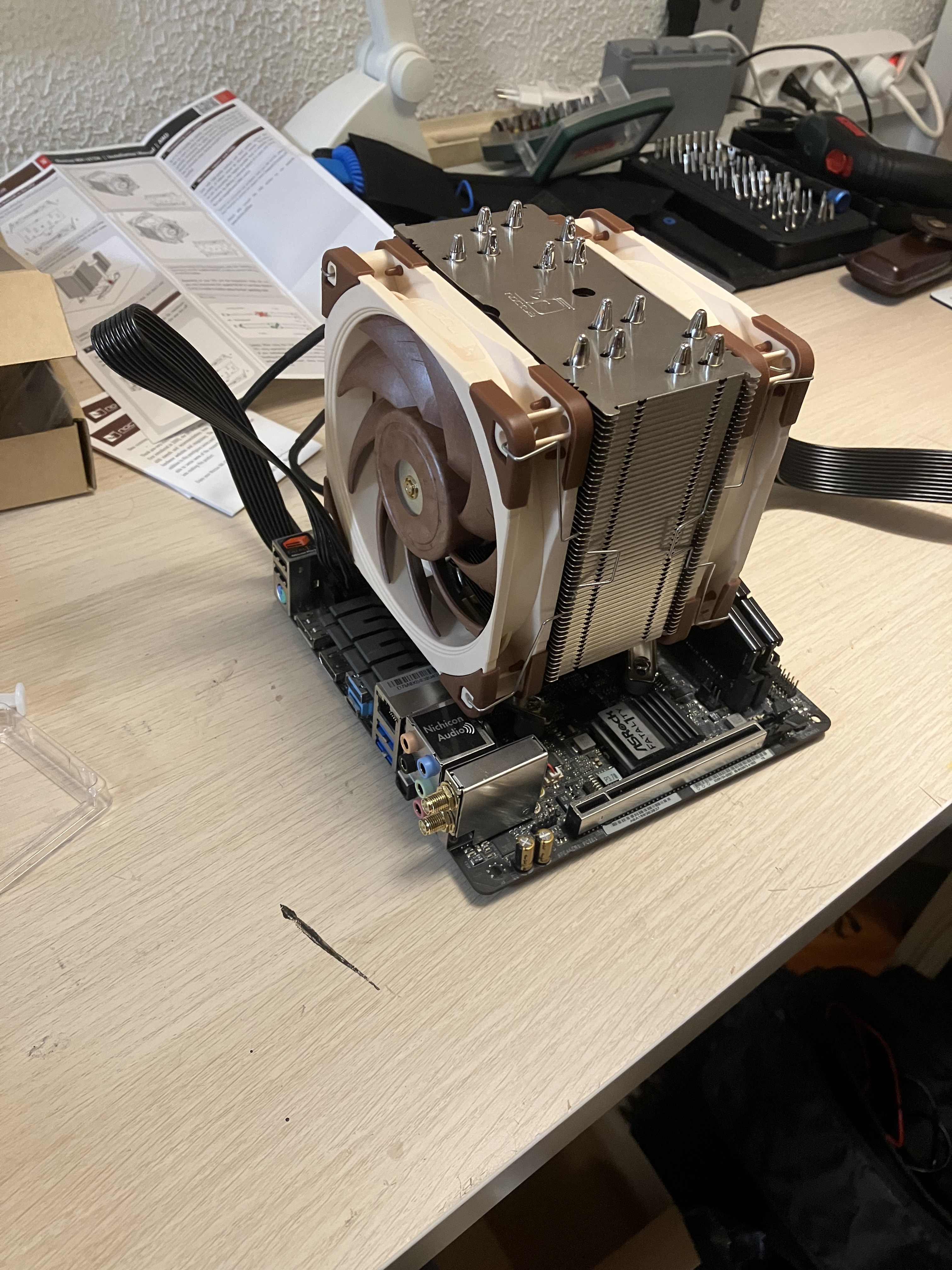
After the game of tetris that is every mini-ITX build ever, and one additional trip between my parents' place and my own home to fetch the forgotten stock CPU backplate, the end result looked like this. Please excuse the rat's nest, there is no room for proper cable management with this amount of computer in such a little space, so I didn't even try and just made sure there was no physical interference.
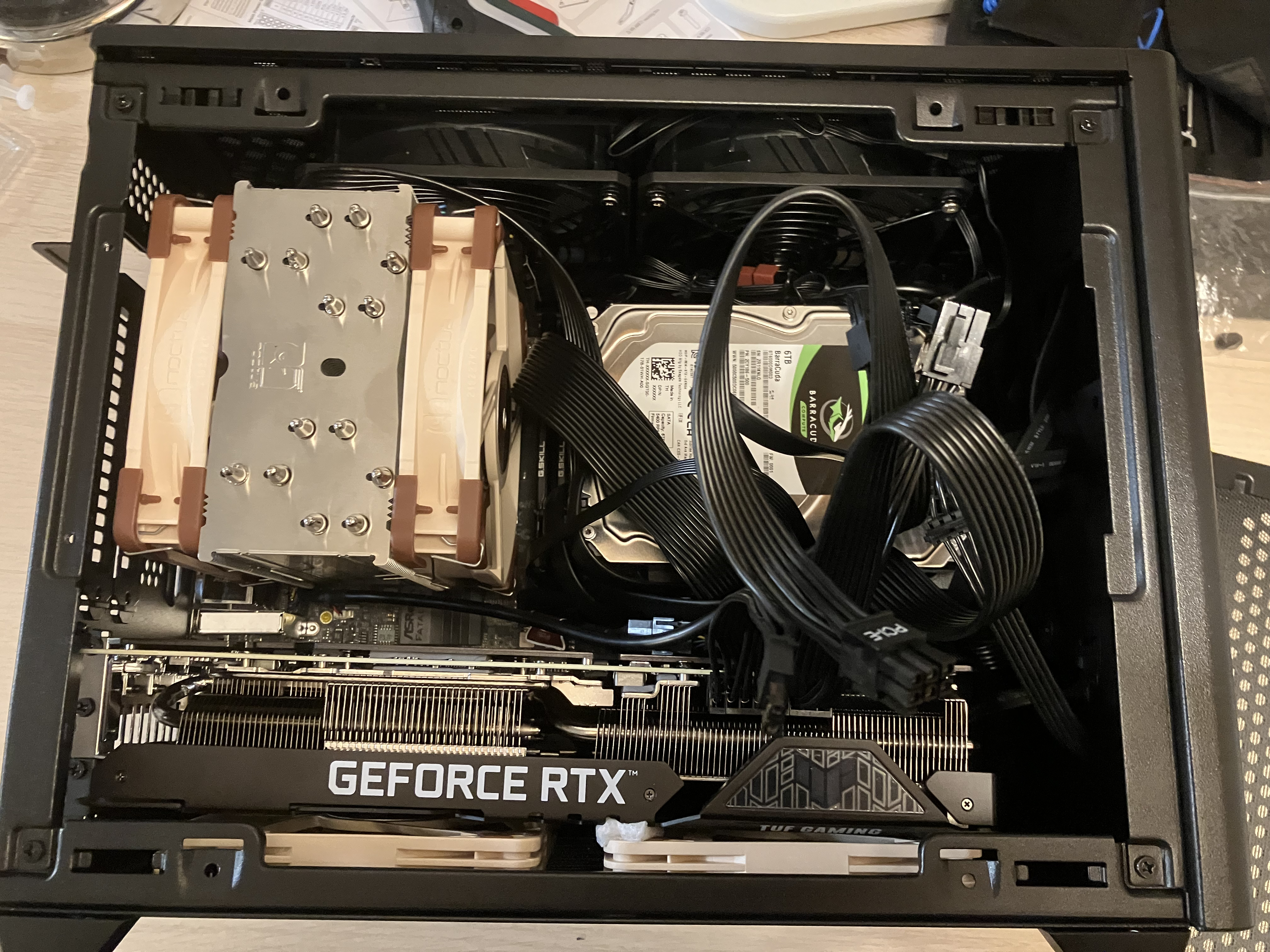
The piece of styrofoam at the bottom wasn't necessary. The GPU doesn't have enough space to flex enough for the flex to become a problem, and the eventual point of contact between the GPU cooler and the bottom intake fan is shroud against shroud with no physical interference.
The PC is still carryable in a rugged-enough shopping basket, and largely, it worked just fine. Even the skimpy VRMs of the (admittedly a bit imbalanced in regards to the CPU choice) motherboard have caused zero issues. However, there was one major debacle: the PSU.
The first unit was faulty, tripping overcurrent protection every time I tried to put the computer to S3 sleep with XMP on. I successfully filed an RMA. However, the replacement unit, while functional, had the loudest-whining coils I had ever heard. At this point, I decided to ditch Cooler Master, return the second unit as well, and go with the ITX gold (or should it be platinum?) standard of Corsair SF750 Platinum. Despite the 100 W lower label wattage, it has been rock solid ever since.
This post was retroactively compiled on 2024-01-05 from photos in my photo library.